SUMMARY
This is AI generated summarization, which may have errors. For context, always refer to the full article.

MANILA, Philippines – Chinese vessels have been criss-crossing Philippine waters even as the government claims friendlier ties with China, casting doubt on the merits of President Rodrigo Duterte’s so-called independent foreign policy that has largely favored Beijing.
A growing list of incursions by different kinds of boats and ships from China indicate a scenario that Defense Secretary Delfin Lorenzana himself described as “alarming.”
Rappler has listed reported sightings and incidents involving Chinese vessels in Philippine waters, with at least 12 episodes occurring so far in 2019.
I. China Coast Guard vessels
Panatag Shoal
In April, ABS-CBN News reported 4 China Coast Guard (CCG) vessels guarding the shoal. Two were anchored in the lone passage into the inner lagoon while another two were patrolling the periphery.
China’s white Coast Guard ships have become a permanent fixture in and around Panatag (Scarborough) Shoal ever since a standoff with Philippine vessels in 2012.
Filipino fishermen said the CCG prevents them from entering the shoal’s lagoon, where there is more fish to catch.The white ships fire water cannons at Filipino boats that attempt to enter the lagoon or else they deploy speed boats to accost the Filipinos’ wooden bancas.
Access to the inner lagoon is vital to Filipino fishers. Leonardo Cuaresma, chairman of the Federated Fishermen Association of Masinloc in Zambales, told Rappler recently that their catch has declined by as much as 80% in the years they have been barred from the lagoon.
Action Taken: The Department of Foreign Affairs (DFA) said it filed a diplomatic protest against China not over its Coast Guard’s presence, but the mass harvesting of giant clams by Chinese trawlers.
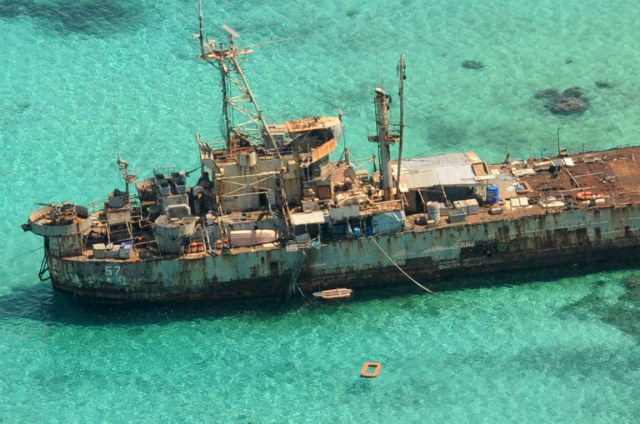
Ayungin Shoal
On August 20, the Armed Forces of the Philippines Western Command (AFP Wescom) based in Palawan reported that a China Coast Guard ship has been lingering around Ayungin (Second Thomas) Shoal since August 1.
AFP Wescom Spokesperson Lieutenant Colonel Stephen Penetrante said the Chinese white ship just “goes around the area, stopping and going” in the Kalayaan Island Group (KIG), the Philippines’ name for the portion of the Spratlys that it claims sovereignty over.
Ayungin Shoal is where the rusting, World War II-era Philippine Navy ship BRP Sierra Madre is purposely aground to serve as a permanent outpost of the AFP.
Action taken: Defense Secretary Delfin Lorenzana said on Tuesday, August 20, that he had yet to receive an official report on this, and declined to comment on what action would be taken, if any.
II. Maritime militia vessels
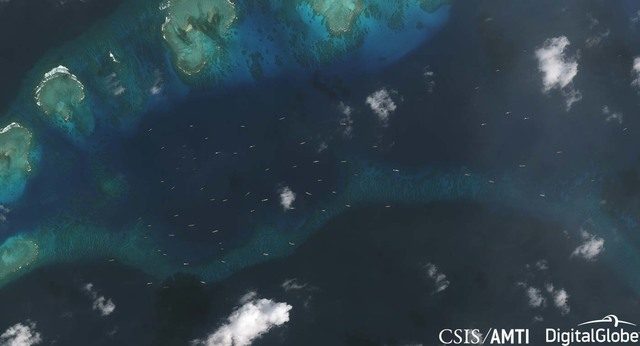
Swarming of Pag-asa Island
In February 2019, reports showed China deployed its maritime militia to the vicinity of Pag-asa Island (Thitu Island) in the West Philippine Sea (South China Sea) as early as July 2018, after the Philippines began constructing on the island.
The Armed Forces of the Philippines (AFP) earlier said more than 600 Chinese ships circled Pag-asa Island from January to March 2019.
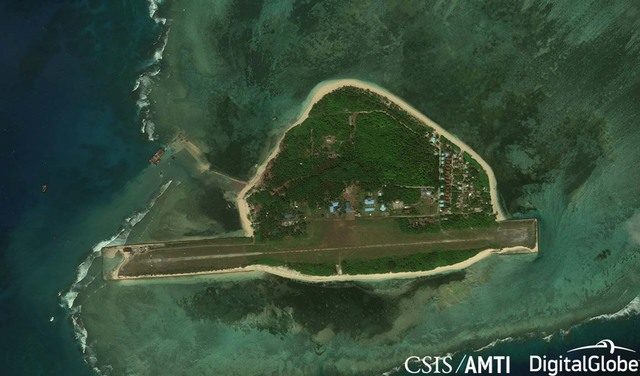
This corroborated an earlier report by Asia Maritime Transparency Initiative (AMTI) of the Washington-based Center for Strategic and International Studies (CSIS), which said satellite images captured from mid-December to late January 2019 showed the presence of Chinese vessels in the area.
According to National Security Adviser Hermogenes Esperon Jr, 113 Chinese vessels were found swarming Pag-asa Island on July 24 – a new record high in terms of the number of Chinese ships spotted in the area at a single point in time. Esperon said last July 30 the ships were supposedly no longer there due to bad weather at the time.
The Philippine government had rejected as “illegal” the presence of Chinese ships in the area, saying it was a “clear violation” of Philippine sovereignty, sovereign rights, and jurisdiction as defined by international law.
Unlike other areas in the West Philippine Sea, President Duterte usually takes a tough stance against China when it comes to the presence of its vessels near Pag-asa Island. The island is home to a small community of Filipinos.
Actions taken: Foreign Secretary Teodoro Locsin announced the filing of at least two diplomatic protests against China over the issue – one in March and the other in July 2019.
The DFA likewise said the Philippines has “consistently manifested” its position on Pag-asa Island and the KIG, and its objections over illegal or “coercive activities” through diplomatic actions. These included notes verbale and bilateral meetings with China.
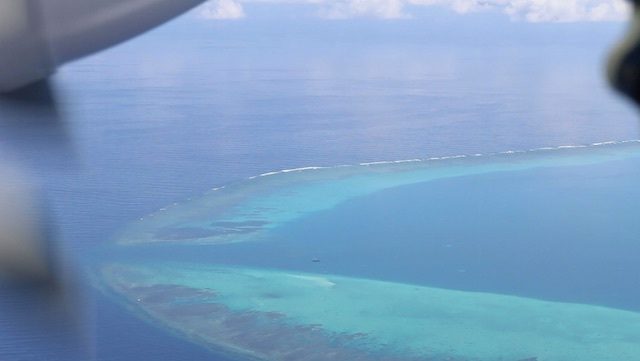
Blue ships in Panatag Shoal
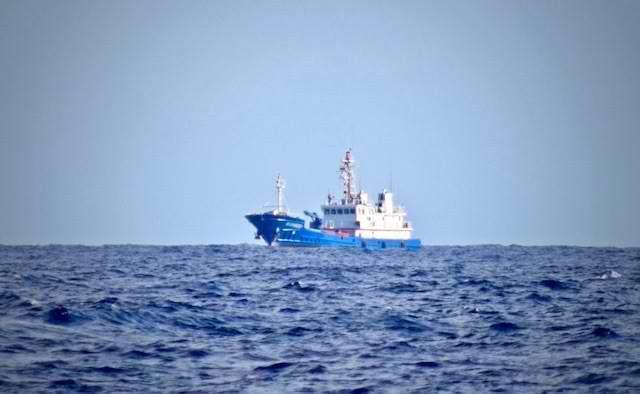
Accompanying the 4 China Coast Guard white ships in guarding Panatag Shoal back in April were two huge blue trawlers that local fishermen and security officials understood to be Chinese maritime militia.
News crews that have traveled to the area consistently reported seeing the blue ships, which hardly move or show any activity aside from standing guard over the shoal.
Action taken: None reported.
III. Fishing boats
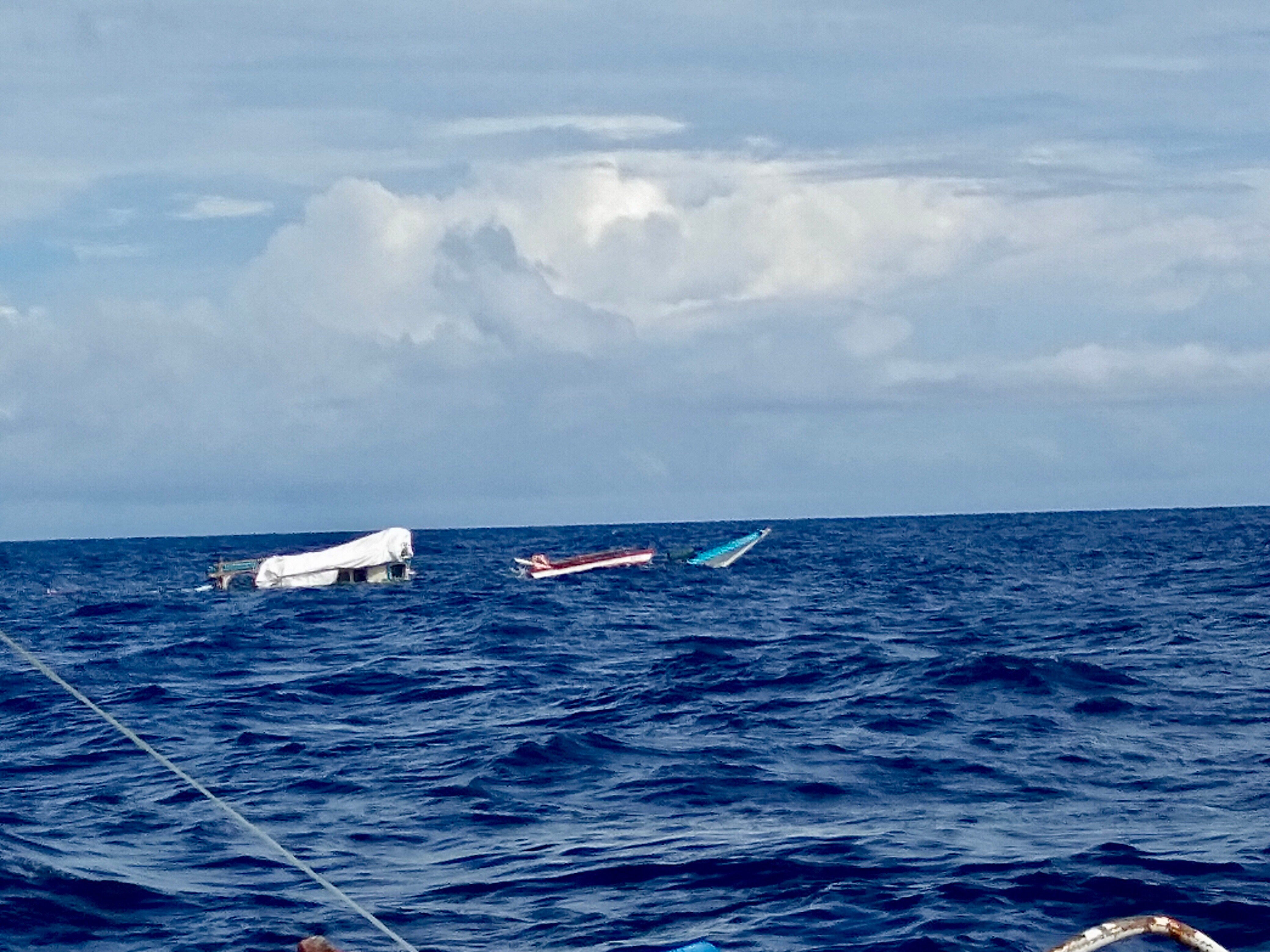
The sinking of Gem-Ver
On the night of June 9, Chinese trawler Yuemaobinyu 42212 rammed the stern of Philippine fishing boat Gem-Ver as it was anchored near Recto Bank in the West Philippine Sea. The smash left a hole in Gem-Ver that caused it to sink.
The Chinese ship abandoned the 22 fishermen onboard Gem-Ver in the open sea. (READ: THE SINKING OF GEM-VER: Barko! May babanggang barko!)
After learning of the incident, Defense Secretary Delfin Lorenzana blasted the “cowardly action” of the Chinese vessel for “abandoning” the Filipinos. In stark contrast, other Cabinet officials downplayed the incident and cast doubt on the account of Gem-Ver’s fishermen.
The ramming and sinking of Gem-Ver has been the most heated issue in the West Philippine Sea since the Scarborough Shoal standoff in April 2012, which prompted the Philippines to file a historic case against China months later.
Despite public outcry, President Rodrigo Duterte dismissed the sinking of Gem-Ver as a “maritime incident,” echoing the Chinese foreign ministry which downplayed the boat sinking as “an ordinary maritime traffic incident.”
Action taken: Locsin raised the incident at the United Nations (UN) as he hit the “felony” of abandoning persons in distress. He cited Article 98 of UN Convention on the Law of the Sea (UNCLOS) which “explicitly provides for the ‘duty to render assistance.'”
The Philippines also slammed the Chinese ship in a statement before the UN’s International Maritime Organization.
Since then, Malacañang announced a planned joint investigation with China into the incident. Meanwhile, official findings of an investigation by the Philippine Coast Guard (PCG) and Maritime Industry Authority said the Chinese vessel failed to prevent the collision and save the Filipinos.

Giant clam harvesting in Panatag Shoal
In April, reports said at least two wooden vessels with Chinese flags were spotted harvesting giant clams from Panatag Shoal. Filipino fishermen said it was a constant activity of the Chinese, despite China and the Philippines imposing a supposed fishing ban on the shoal.
Satellite images revealed widespread scarring of the seabed inside the lagoon, indicating the massive harvesting of giant clams, which were seeded by Filipino scientists years before.
Action taken: The DFA filed a diplomatic protest against China and said it was eyeing “legal action” over the incident.
27 fishing vessels around Panata Island
On August 20, the AFP Wescom said there were 27 fishing vessels spotted around Panata Island in the KIG. Panata Island, or Lankiam Cay, is one of the smallest naturally-occurring land features in the KIG, and it is 7 nautical miles from the Philippine-controlled Loaita island.
Of the 27 vessels, some were Chinese, said AFP Wescom’s Penetrante, while others were Vietnamese. He did not disclose how many belonged to which country. (READ: Satellite maps show foreign vessels swarming Philippine waters)
Action taken: Defense Secretary Delfin Lorenzana said on August 20 that he was still waiting for an official report from the AFP Wescom.
IV. Survey vessels
In August, map images showed Chinese survey vessels operating in Philippine waters.
The images shared by US Naval War College’s Ryan Martinson showed Chinese survey vessel “Dong Fang Hong 3” operating in waters near Pagudpud, Ilocos Norte, on August 7. Prior to that, map images also showed Chinese oceanographic survey ship “Zhanjian” operating some 80 nautical miles off the east coast of the Philippines on August 3 to at least August 6.
Here’s a close-up of activities from August 5-6. pic.twitter.com/UWIgwbO8jw
— Ryan Martinson (@rdmartinson88) August 6, 2019
Martinson is an assistant professor at the China Maritime Studies Institute at the Naval War College.
Under UNCLOS, marine scientific research can only be conducted in exclusive economic zones if permission is granted by the coastal state, in this case, the Philippines.
Lorenzana said China did not inform the Philippines about these activities.
Add the Dong Fang Hong 3 to the list of Chinese survey ships operating in the Philippines exclusive economic zone today. Would require Manila’s permission to conduct research there. (file photo) pic.twitter.com/j8lx96E1tR
— Ryan Martinson (@rdmartinson88) August 7, 2019
Actions taken: Locsin announced filing a diplomatic protest over the presence of survey ships in the Philippines’ exclusive economic zone (EEZ).
He later moved to impose a “universal ban” on foreign marine surveys in Philippine waters but backtracked, saying he would leave it open to all countries with the Philippines’ permission.
V. Warships
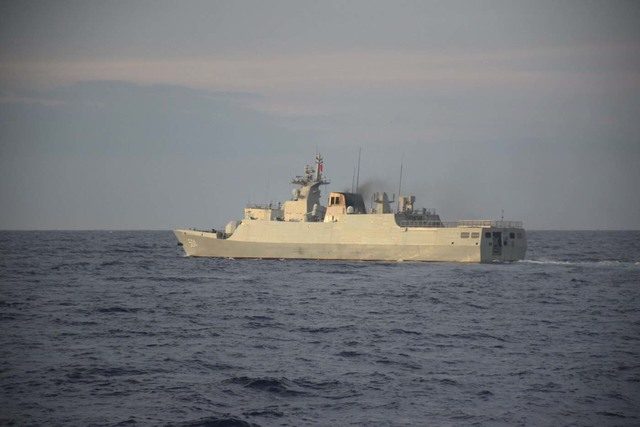
Naval ship near Panatag Shoal
A Chinese naval ship, distinguished by its gray hull, was spotted by the PCG as it patrolled the area of Panatag Shoal from June 7 to 10.
Aside from the warship, the PCG said two China Coast Guard and two militia vessels were also plying the waters within its territorial seas 12 nautical miles from the shoal.
Lorenzana said it was “nothing new,” as gray ships from different countries, including the Philippines, routinely pass the area.
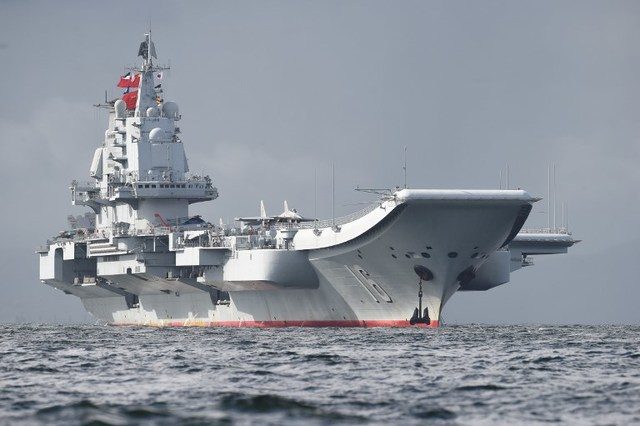
Liaoning aircraft carrier
On June 19, Supreme Court Senior Associate Justice Antonio Carpio said he received and verified information that the Chinese Navy’s first aircraft carrier, the Liaoning, passed Sibutu Strait in Tawi-Tawi “2 to 3 weeks ago.”
Defense Secretary Delfin Lorenzana denied this at the time, saying there were no reports of the Liaoning’s passage from military troops in the area. As the strait is international sea-lane, Lorenzana said there was “no need to ask permission if it is innocent passage.”
4 Warships in Sibutu, Balabac Straits
About a week later on July 25, Lorenzana revealed that the military monitored “4 instances” of Chinese warships passing Sibutu Strait since February.
According to Lorenzana, Chinese Ambassador Zhao Jianhua confirmed their warships traversed the strait but that it was smaller vessels, not the Liaoning. Lorenzana said China should have sought permission before entering the strait, even if it was innocent passage because the vessels were warships.
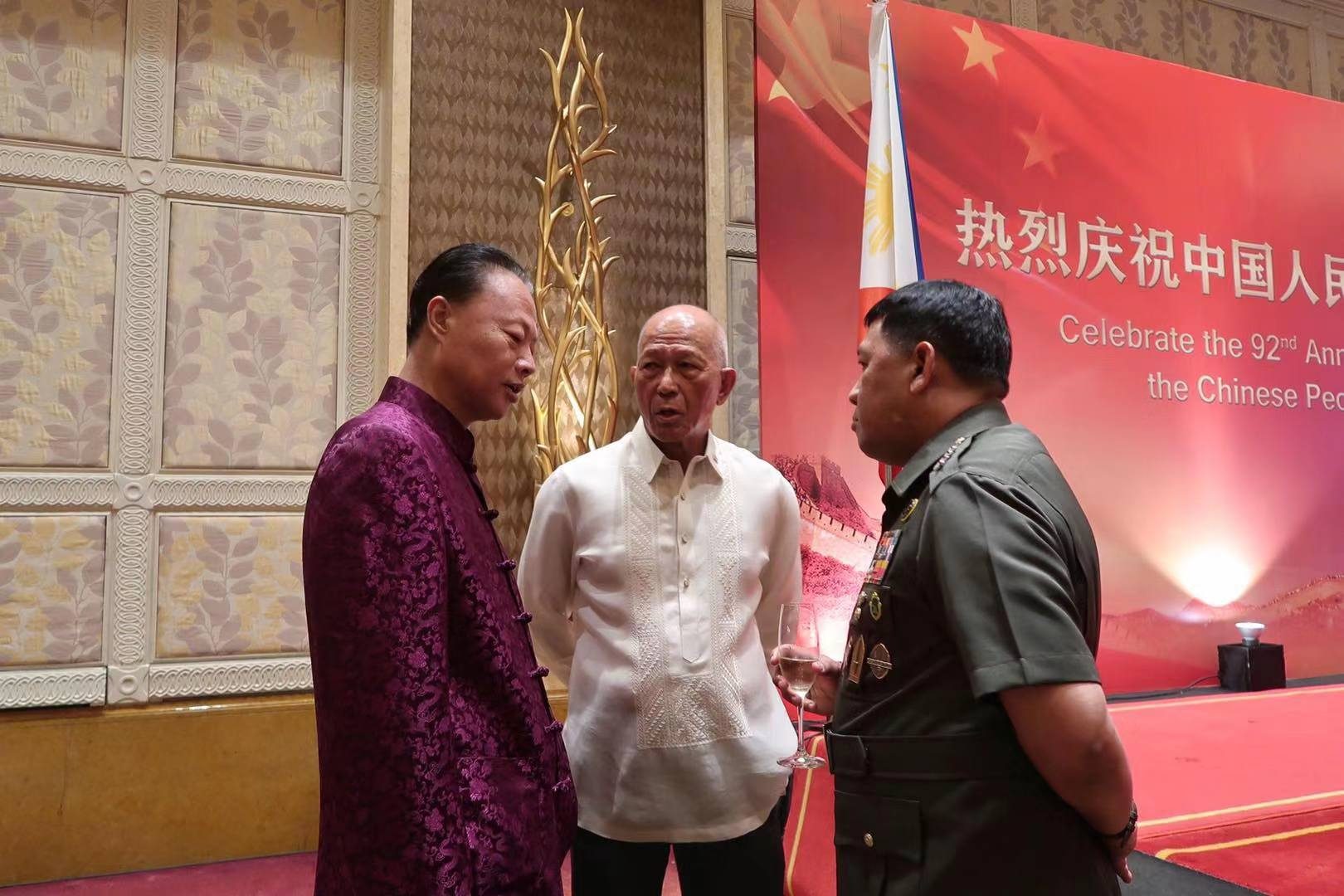
Zhao committed to tell the Chinese Navy to give notice before passing Philippine waters, Lorenzana said.
The defense chief pointed out that the warships must have turned their automatic identification systems off as they went undetected by Philippine radars. Lorenzana found this questionable, and the AFP called it “duplicity“ and “deception.”
Lorenzana said the 4 warships also passed Balabac Strait. This came after AFP Wescom said on August 6 that it monitored the passage of 4 Chinese warships in waters around Balabac Island, Palawan on June 17.
AFP Wescom said the warships ignored radio communications from Philippine troops in the area, except for one that identified its bow number (reportedly the Liaoning) accompanied by two vessels of its strike group.
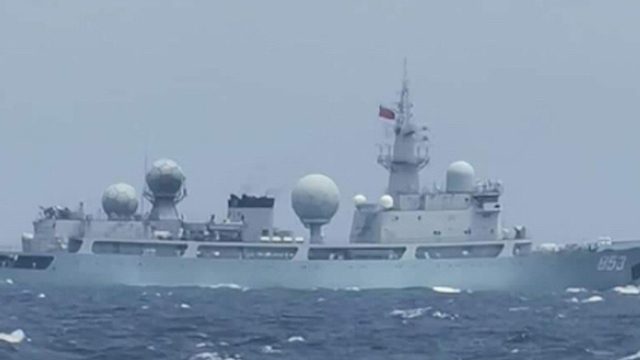
5 more warships in Sibutu Strait
The AFP Western Mindanao Command (Westmincom) said on August 14 that they monitored 5 more Chinese warships that traversed Sibutu Strait in July and August.
AFP Westmincom Commander Lieutenant General Cirilito Sobejana said two ships passed the strait in July, followed by 3 in August. However, photos the unit released afterwards indicated 4 ships spotted on July 2 and one on August 4.
Sobejana said the ships were on a curved course, contrary to innocent passage that should have been a straight line or the shortest way through. The Chinese gray ships changed course and exited Philippine waters after Filipino naval boats and aircraft tried to approach them.
Action taken: Prompted by Lorenzana’s remarks, Locsin ordered the filing of a diplomatic protest against China over all incidents that involved warships passing through Philippine waters.
@DFAPHL @ASPAC fire diplomatic protest over Chinese warship; drop the diplomatic crap; say it is ours period; they’re trespassing. If we did it already fire another. We won’t run out. & don’t wait for formal intel. This is the Secretary of National Defense no less. Fire at will.
— Teddy Locsin Jr. (@teddyboylocsin) August 19, 2019
Lorenzana said he wanted Duterte to bring up the presence of Chinese warships in Philippine waters during the President’s visit to China later in August. Duterte himself insisted he would “invoke” the 2016 Hague ruling the Philippines won against China during his visit. (READ: Philippines loses to China 3 years after Hague ruling) – Rappler.com
Add a comment
How does this make you feel?





There are no comments yet. Add your comment to start the conversation.